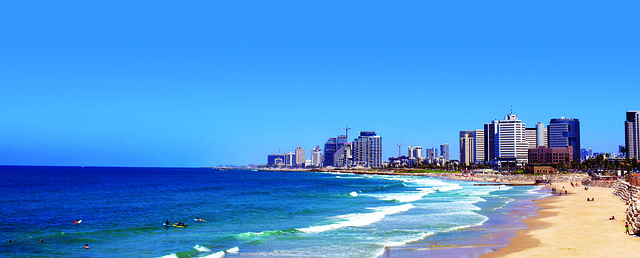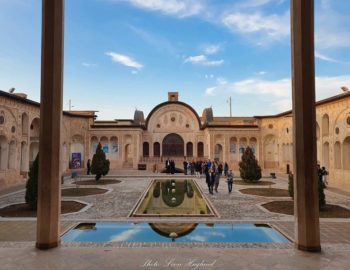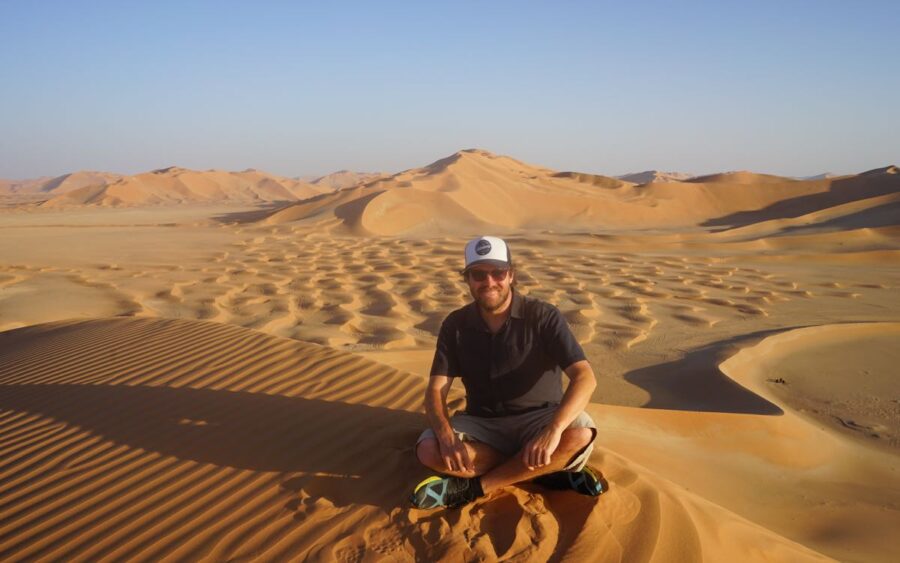Jerusalem is an extraordinary city with the number of attractions that can keep a tourist busy for a week and makes an excellent hub for several fantastic day trips from Jerusalem.
Historical sites from 3000 years ago, religious sites, museums, markets, street food, and nightlife all blend in a unique way.
Jerusalem is surrounded by natural beauty from all directions. To the east starts the Judean Desert. With a short 30 minutes’ drive, you will find yourself in the middle of the wilderness.
The impressive natural scenery is a hiker’s paradise and a perfect setting for several iconic archaeological sites.
To the west, with a sharp contrast, the slopes of the Judean mountains with its evergreen Mediterranean woodland.
Best Day Trips From Jerusalem

Climb to Masada

Masada is probably the most popular day trip out of Jerusalem.
Dozens of organized day trips leave Jerusalem daily. They offer different variations, but in all of them, Masada is the focal point. This UNESCO heritage site has it all.
Fantastic scenery, Amazing archaeological findings, and a dramatic historical story.
Masada is about 1.5 hours drive to Jerusalem and has excellent public transportation service. The site is located on a table-shaped mountain 400 meters above the Dead Sea.
You can reach the top with the Gondola or hike up on the Snake path. The path is 3 Kilometers long and takes around 45 minutes to climb. A popular variation of this trip is arriving very early to watch the sunrise over the Dead Sea from the summit.
The Gondola opens at 08:00 am, so you will need to “earn” the sunrise by climbing on foot.
Float on the Dead Sea

At 400 meters below sea level, the Dead Sea is the lowest point on earth.
The high concentration of minerals gives the water healing powers and floating ability.
Two of the most famous photographs tourists take back from Israel are floating on the Dead Sea while reading a newspaper and covered head to tows with the back Dead Sea mud.
The Dead Sea is about 45 minutes’ drive to Jerusalem and has excellent public transportation service.
Qumran and the Dead Sea Scrolls

In 1946, a Bedouin teenager accidentally found seven ancient scrolls housed in jars in a cave near Qumran. He had no idea that this was the beginning of such a significant discovery.
This discovery was the beginning of a long archaeological journey that eventually revealed a total of 20 complete scrolls and 16,000 fragments of scrolls.
Out of these fragments, Researchers have assembled a total of 981 manuscripts. Most of them are books of the Torah (Old Testament) written in Hebrew by our ancestors.
Qumran is located near the shore of the Dead Sea, about a 1-hour drive from Jerusalem, and served well with public transportation.
Qumran was a flourishing Jewish settlement that existed during the Second Temple period (7-8 Century BCE). It is believed that its inhabitants were members of the Essenes sect.
The complex is made off public buildings, while the community members lived around in about 30 caves, tents, and sukkahs. The complex’s buildings were kept in reasonable condition thanks to the arid climate in the Dead Sea Valley.
The fame of the site comes from the scrolls that were written by the community. The caves are closed for visitation but can be seen from the observation balcony.
Hike in the Ein Gedi Nature Reserve

The Ein Gedi Nature Reserve is located in the Judean Desert, near the shore of the Dead Sea. It takes about one hour to reach it by car and is also served well with public transport.
The area features vast differences in elevation over very short distances. The distance from the shore of the Dead Sea at an altitude of 400 m below sea level to the desert plateau at 200 m above sea level is less than one Kilometer.
The area is a harsh and barren desert with an annual rainfall of just 40 mm.
However, in the tiny area of the Ein Gedi Nature Reserve, 4 springs are flowing all year round, generating approximately 3 million cubic meters of water a year, making Ein Gedi the largest oasis in the Judean Desert.
The combination of the sharp height difference and the magic of water flowing in the desert makes Ein Gedi a paradise for hikers. Upon entering the reserve, you get a good hiking map, and the trails are well maintained and marked.
Difficulty ranges from an easy walk to see the David waterfall, up to tough full day desert hikes, and everything in-between.
Round up the hike with a visit to the botanical garden in Kibbutz Ein Gedi, or relaxation in the Ein-Gedi SPA.
TIP:
Masada, Dead Sea, Qumran, and Ein Gedi are all located in the same area. A typical day trip would include more than one of them, but it would be impossible to do all of them in one day. Choose what to do according to your personal preference or allocate 2 days.
Hike in Wadi Qelt
Wadi Qelt is a stream running down from the eastern outskirts of Jerusalem, crossing the Judean desert and passing through Jericho before it pours into the Jordan River.
The Judean Desert is arid and barren, but inside the deep gorge of Wadi Qelt, you step into a paradise of water, vegetation, springs, and cascades.
In addition to the natural beauty, you will discover along the way ancient aqueducts and monasteries. There are several marked hiking trails near the water and on the cliffs above the canyon.
You can choose from short walks up to 20 Km tough desert treks. Wadi Qelt is just 20 minutes’ drive from Jerusalem, but it is not served with public transportation.
Visit the Judean Desert Monasteries

The Judean Desert monasteries were established in the 4th century. They reached their peak in the 6th century, a period in which hundreds of monks lived in the monasteries founded by Khariton and Theodosius.
After the Muslim conquest, only a few monasteries and monks remained in the desert. During the Crusaders period, some of the monasteries that were destroyed or abandoned were re-established.
These monasteries stand out today also as a tourist attraction due to their dramatic setting. Most of them are hanging from a cliff and merge beautifully with the surrounding desert scenery.
The most popular to visit is the St. George Monastery in Wadi Qelt and the Marsaba Monastery in Wadi Kidron.
Experience Tel Aviv

Tel-Aviv can be reached from Jerusalem easily with the frequent train service (30 minutes journey).
The two main cities in Israel are so near, yet so far. Jerusalem is holy, conservative, old, beautiful, and mountainous.
Tel Aviv is secular, LGTB friendly, liberal, modern, ugly, and flat. A day trip to Tel Aviv is a fantastic break from a Jerusalem visit. The city is very young, full of bars, clubs, restaurants and has a long stretch of sandy beach.
It never sleeps, and the atmosphere is of a never-ending party. Also, you can find several street markets, plenty of art galleries, and small boutique shops. T
he slogan is “People come to Jerusalem to Pray and Tel Aviv to Play.”
Israel can be an expensive country to visit, especially in places like Tel Aviv where the temptation to enjoy the great restaurant scene might kick in, but it’s possible to do Israel on a budget in a reasonable way.
Explore Beit Guvrin National Park

Beit Guvrin National park is located about 50 kilometres southwest from Jerusalem in the Judean plains. It takes about 01:15 hours to reach it by car, and it is not served well by public transportation.
The whole drive passes through beautiful scenery going down the Judean mountains and then crossing the plains from north to south.
The area of the Judean plains is also nicknamed “The thousand caves land”. All the caves in the area were hewn by humans in ancient times, utilizing the convenient chalk rock for quarrying.
Caves were hewn for a variety of purposes: quarries, cisterns, storerooms, dovecotes, tombs, storage chambers for produce, and shelters for farm animals.
The most important and accessible place to experience this is at the Beit Guvrin National Park. Main caves:
- The “Polish” Cave – A cave from the Hellenistic period that was used to raise doves. It got its peculiar name when during World War II, Polish soldiers visited this cave. They carved the figure 1943 (the year of their visit) into the pillar, along with an inscription: “Warsaw, Poland” and an eagle, the symbol of the Polish army.
- The Columbarium Cave – A common type of cave to the area that was built to raise doves. The walls of this cave feature 2,000 carefully carved niches. Doves were apparently used intensively – their meat and eggs as food and their droppings as fertilizer. Doves were also sacrificed in rituals.
- The Bell Cave – An impressive cave with a very high ceiling, that was hewn during the Byzantine and early Muslim periods. These types of caves were used mainly as quarries and provided building material for cities on the coastal plain and for Bet Guvrin itself.
Besides, you can see additional cave types as well as ruins of an ancient biblical town, crusader fortress, old agricultural tools, a Roman amphitheatre, and hiking trails.
The park is stunning during late winter and spring when the green plains are dotted with thousands of colourful wildflowers.
Visit Jerusalem
Find places to stay in Jerusalem here.
For more on travel in the Middle East check out my backpacking guide to Oman.
I recommend using SafetyWing Travel Insurance for your trip, just in case, it’s best to be prepared.
If you liked this article about day trips from Jerusalem a share would be cool!





